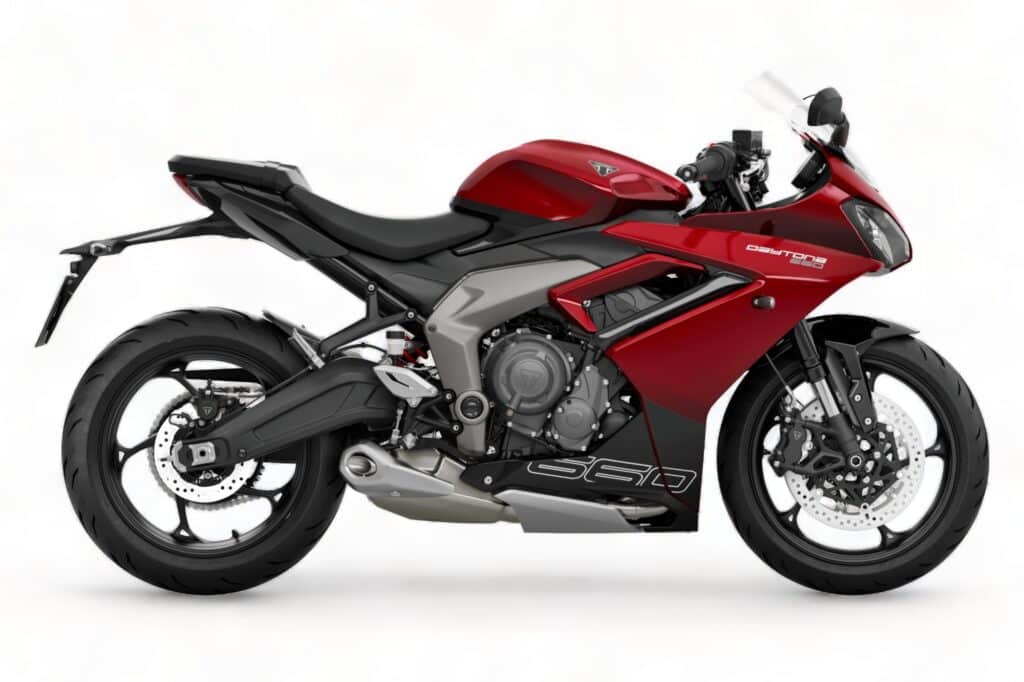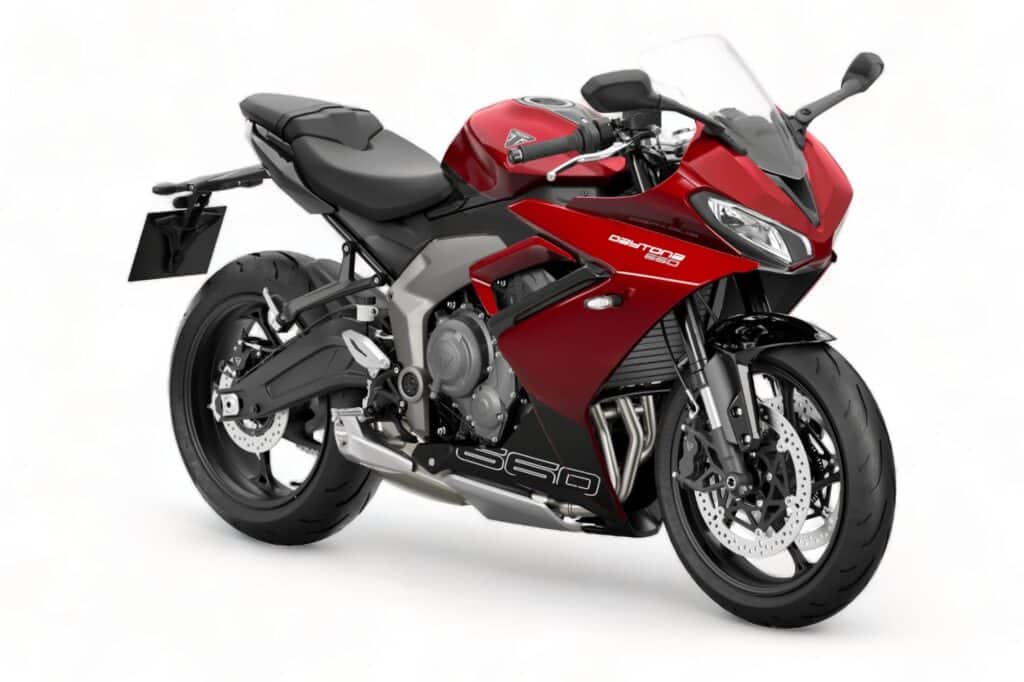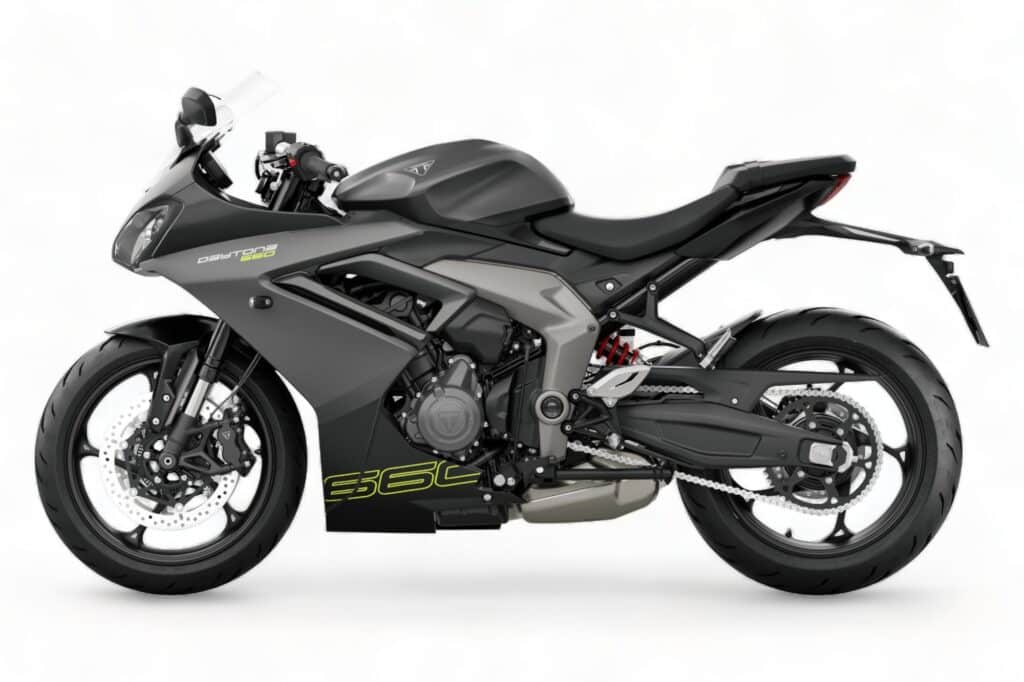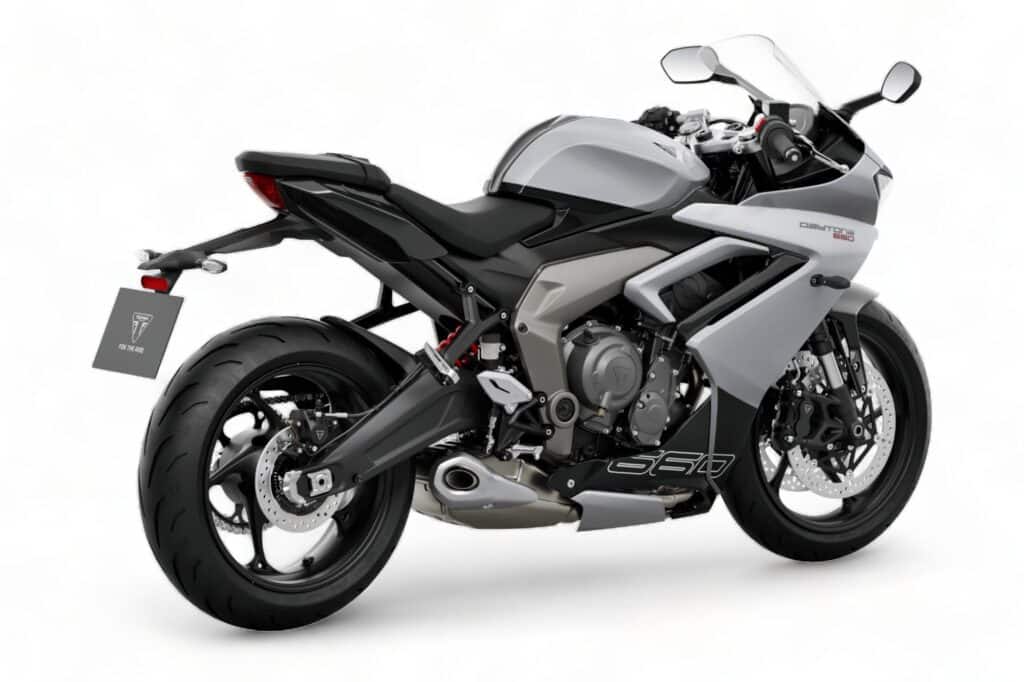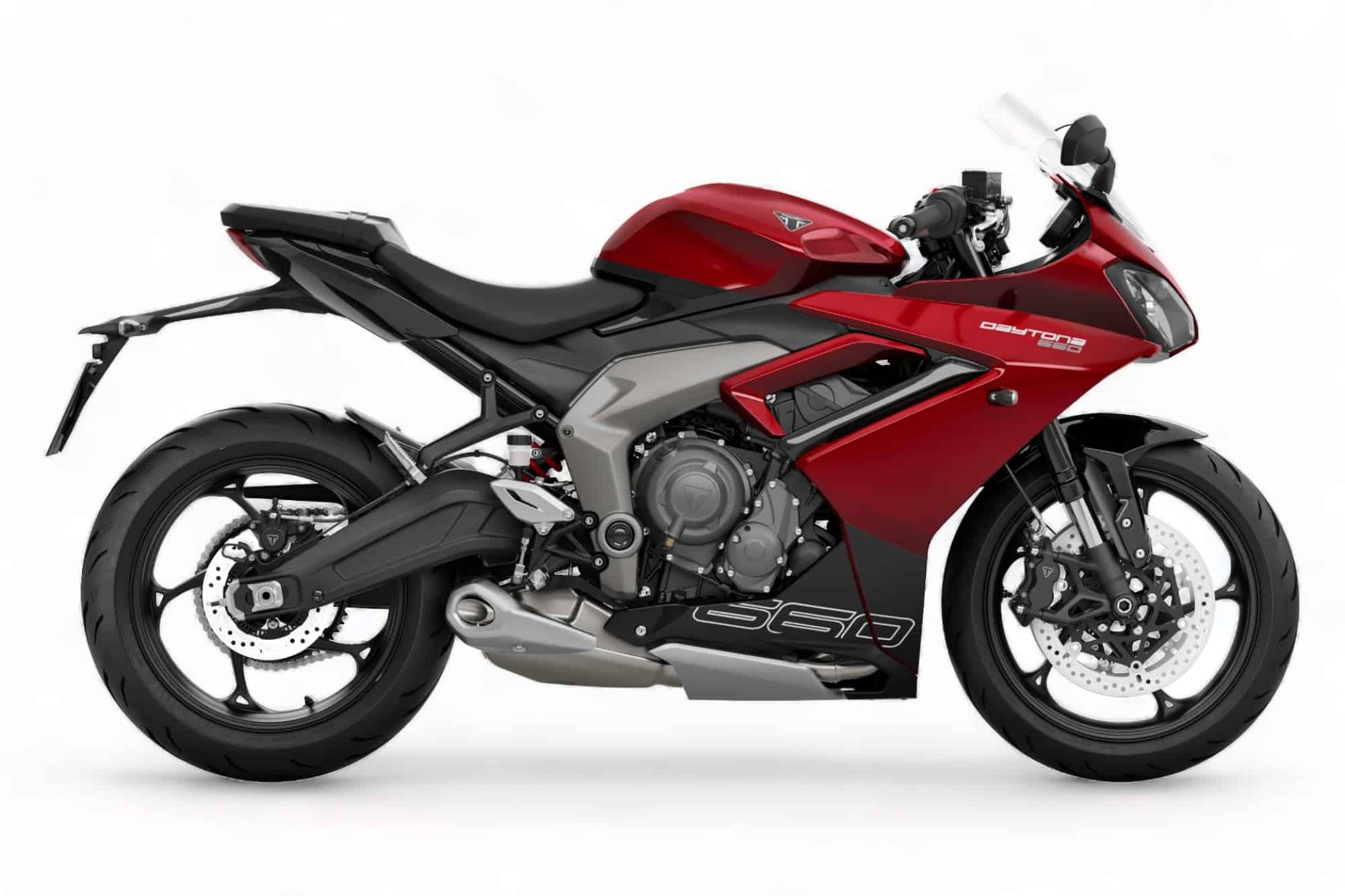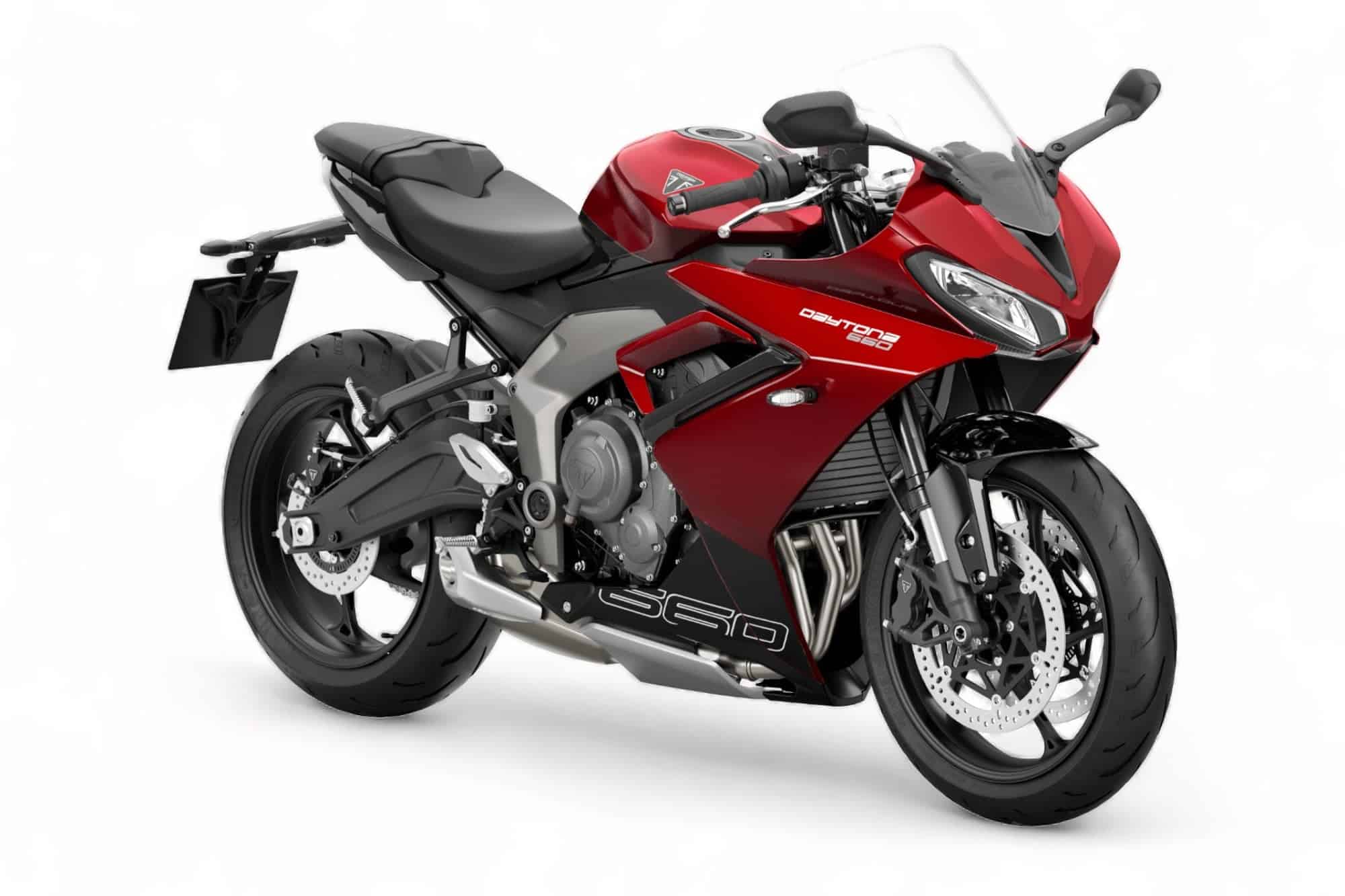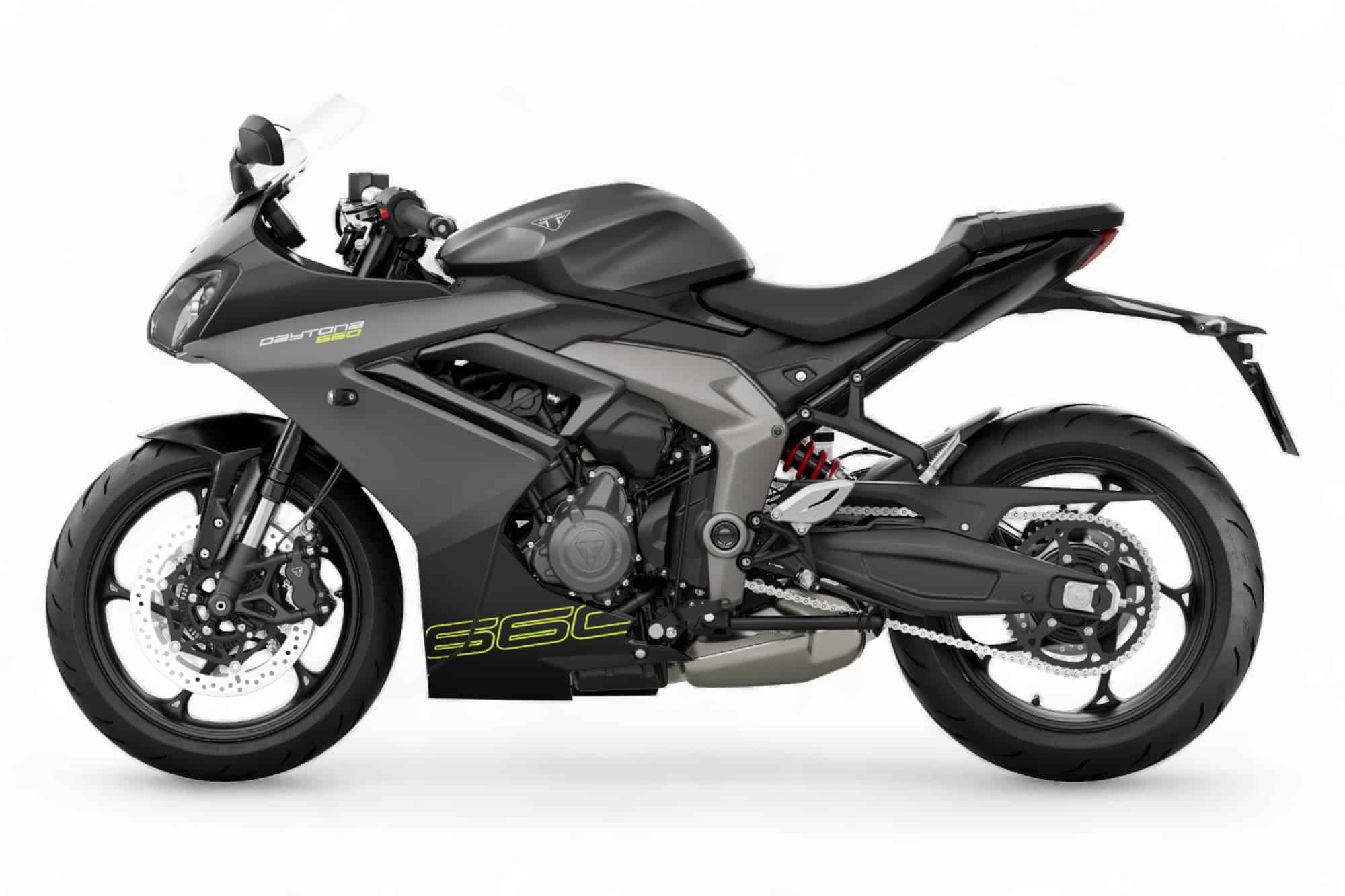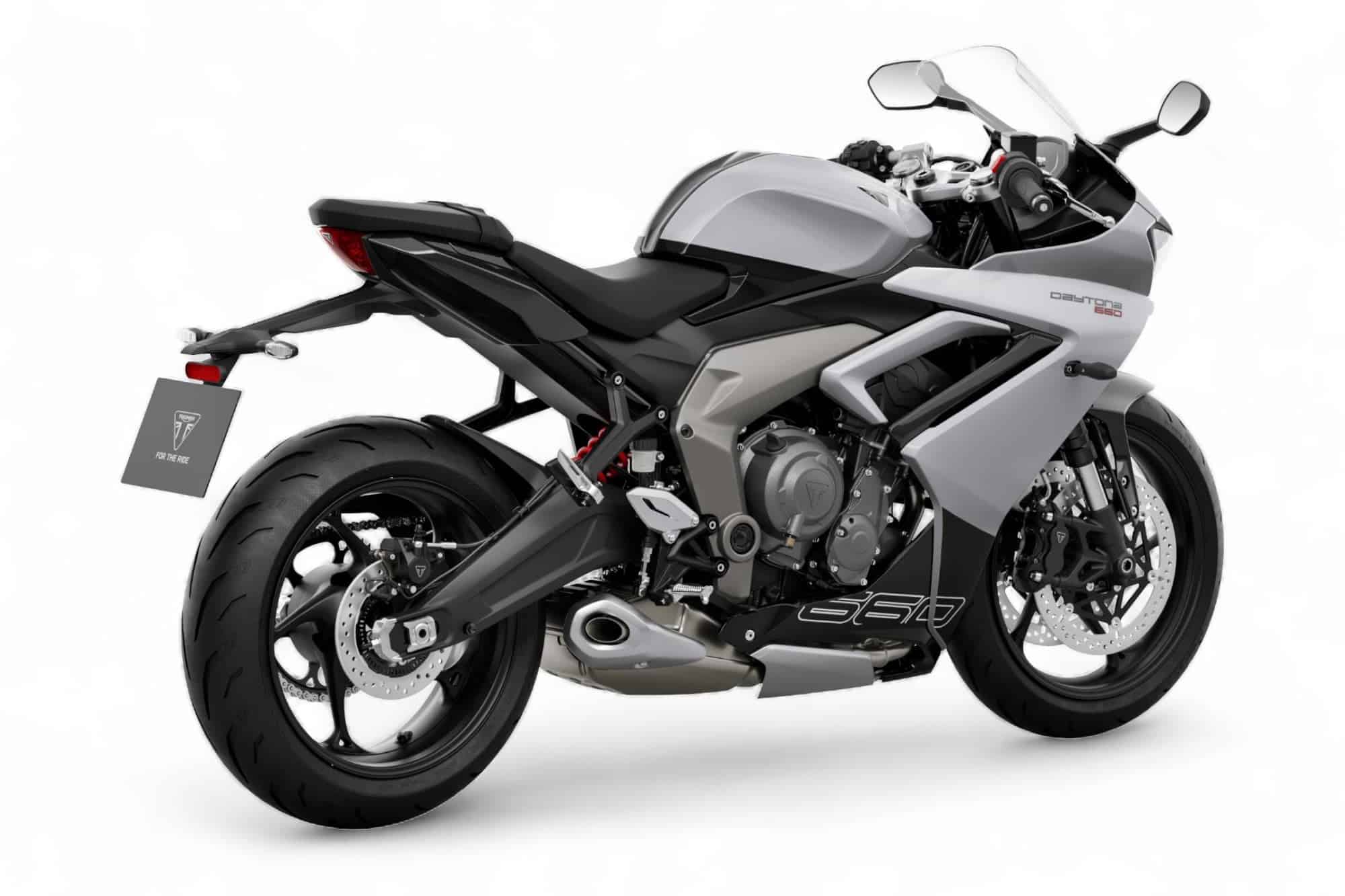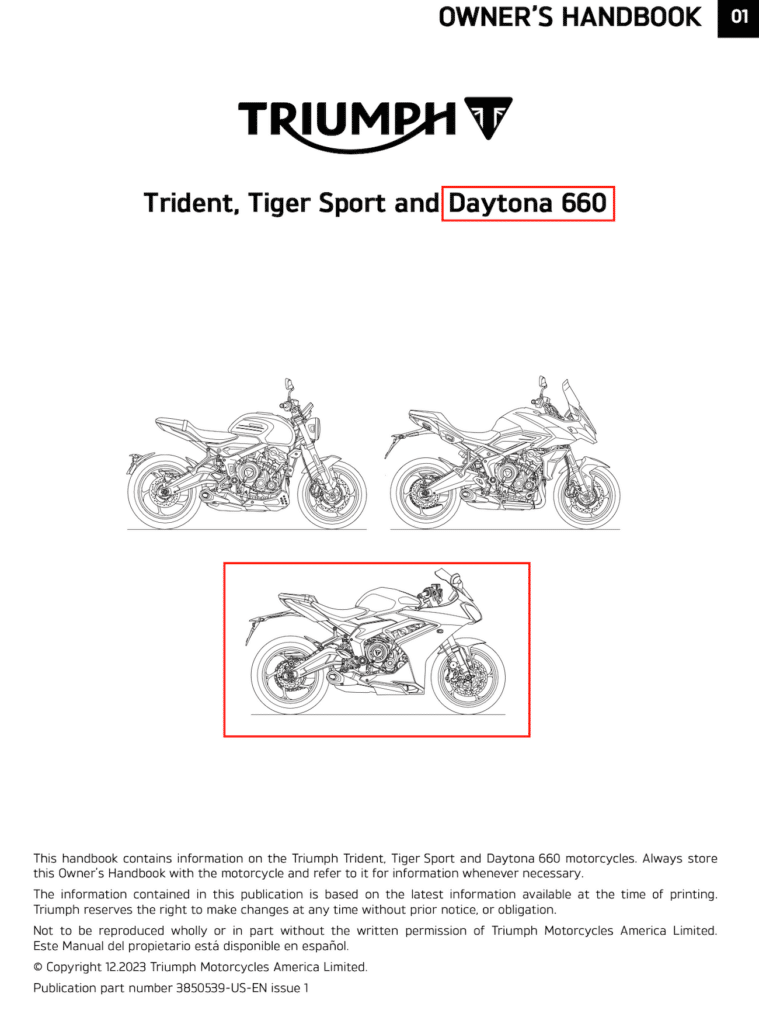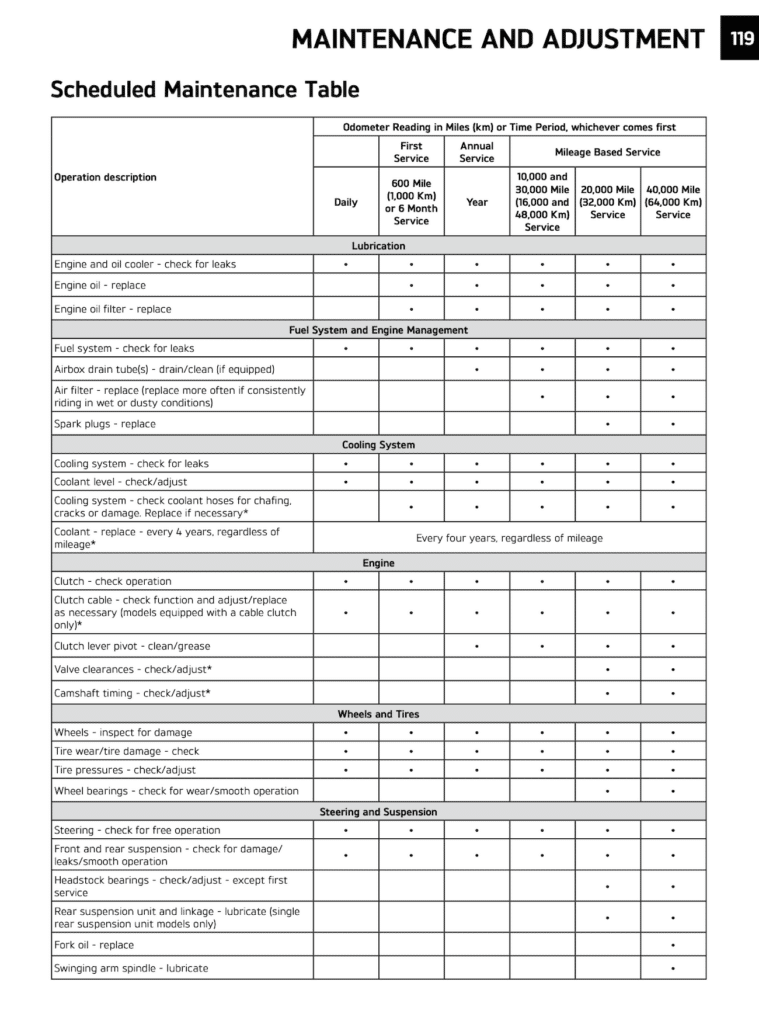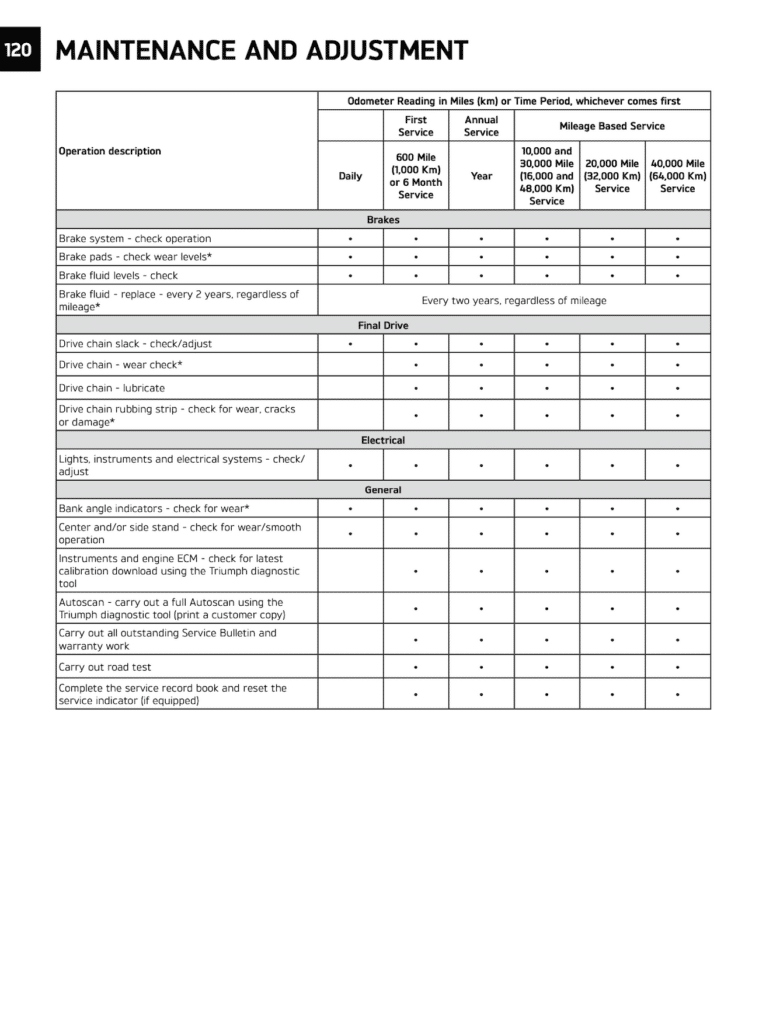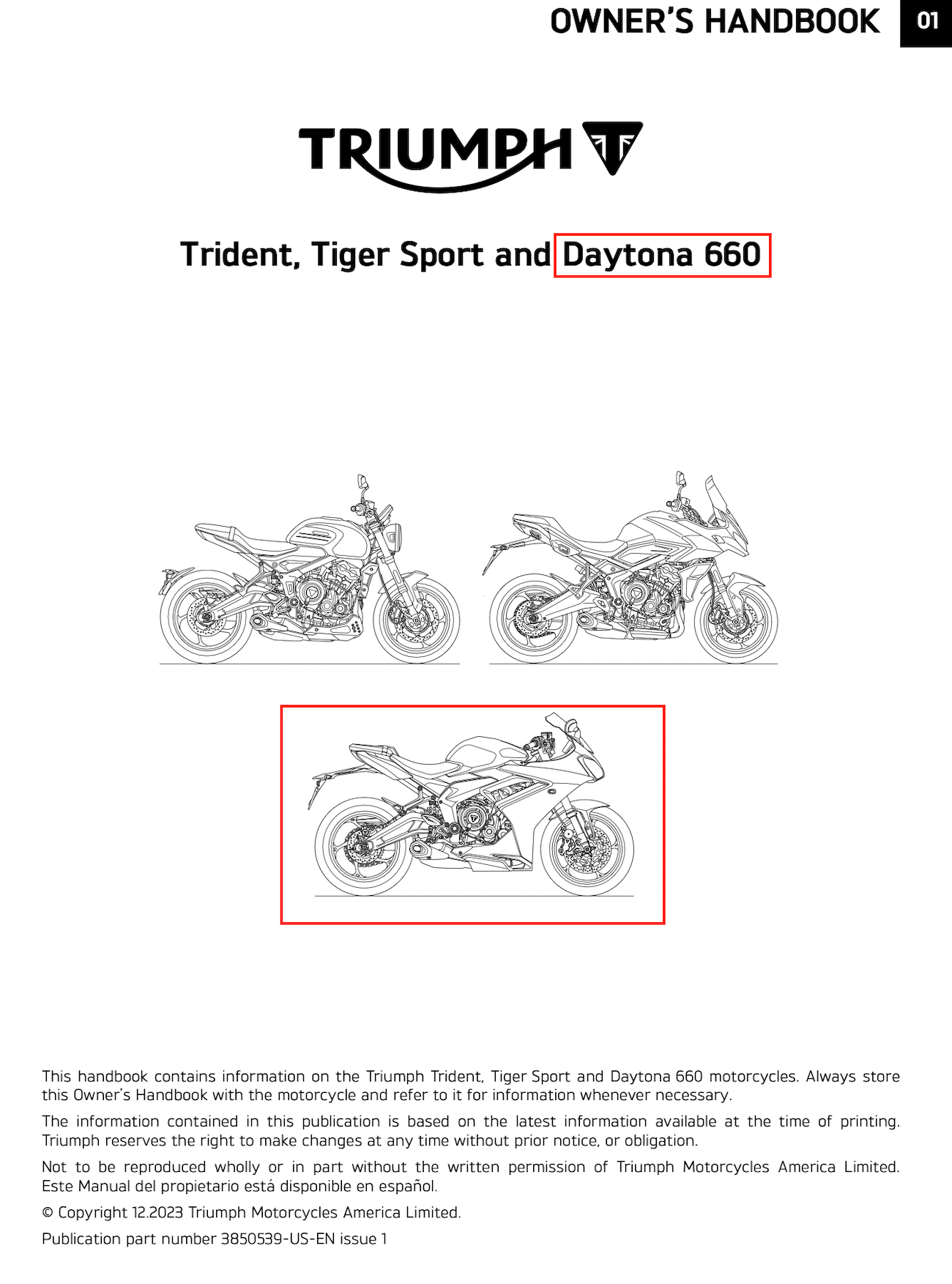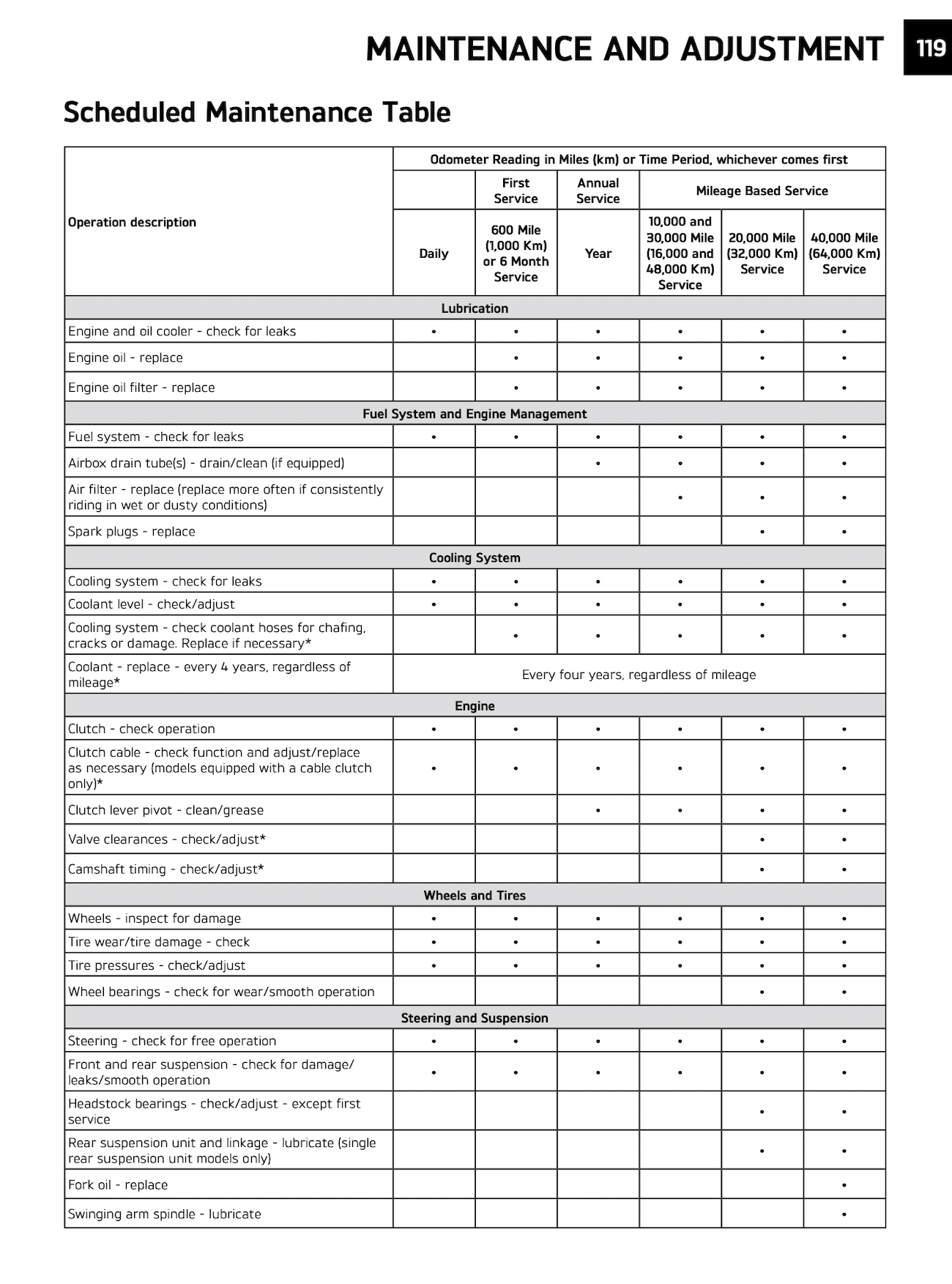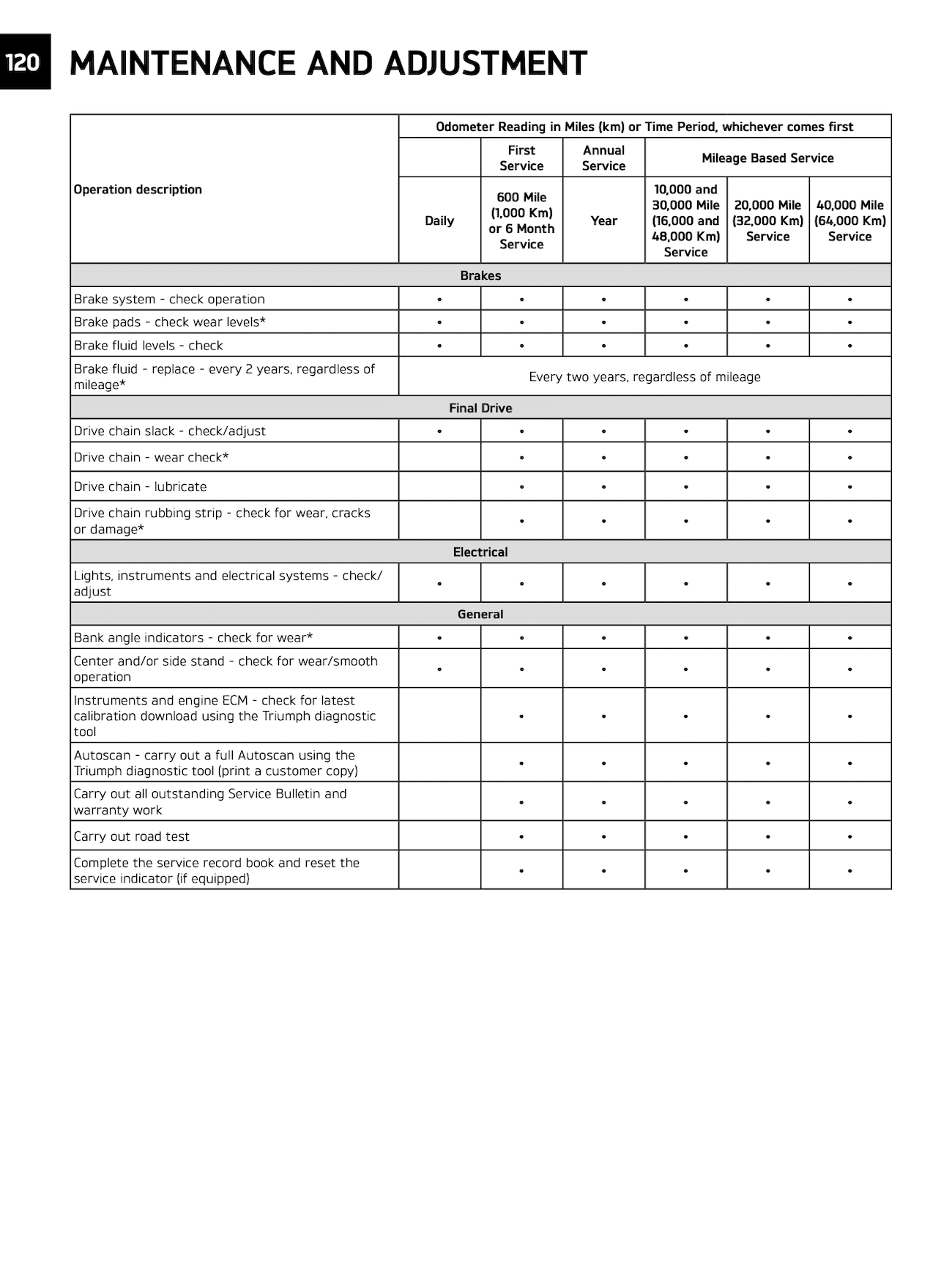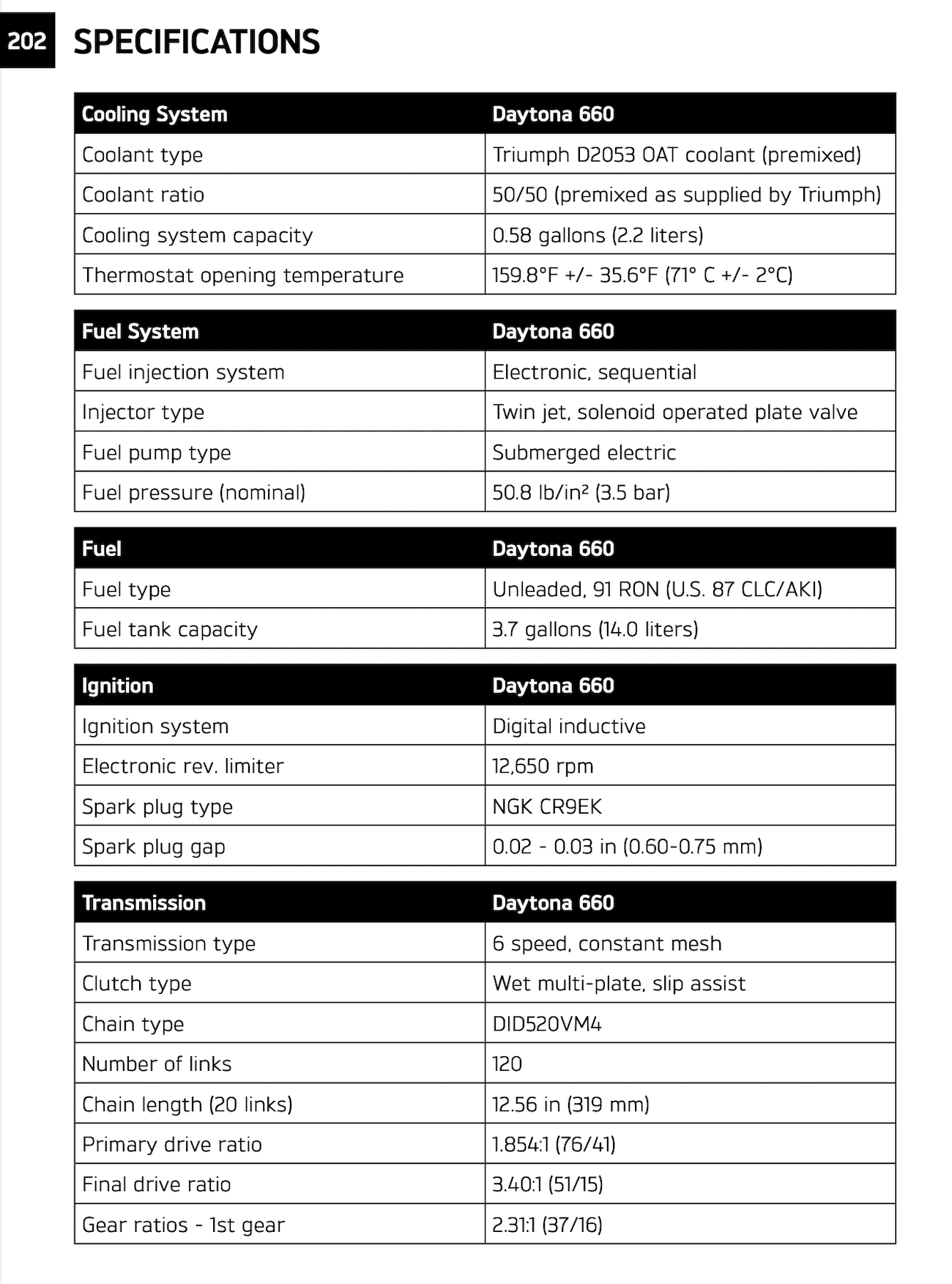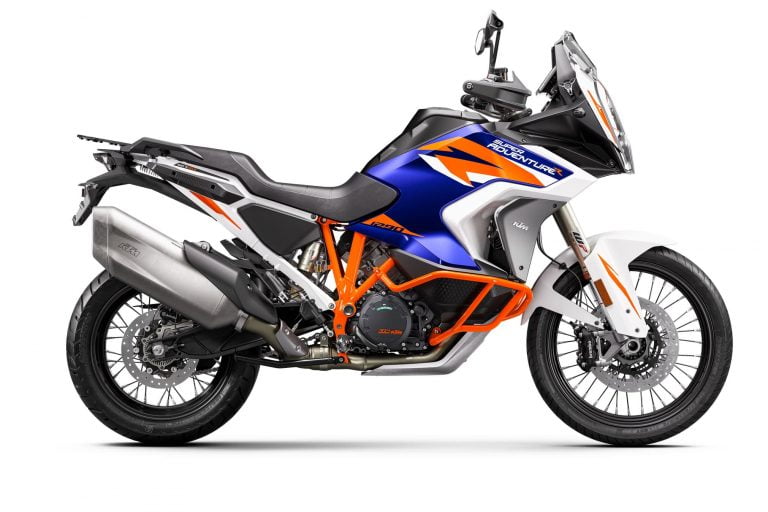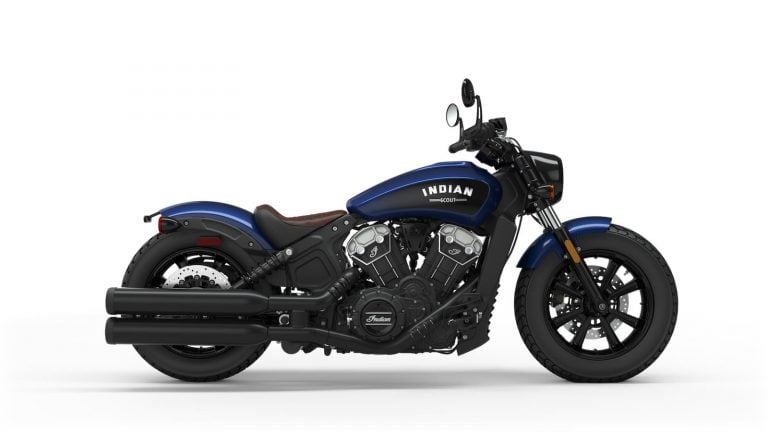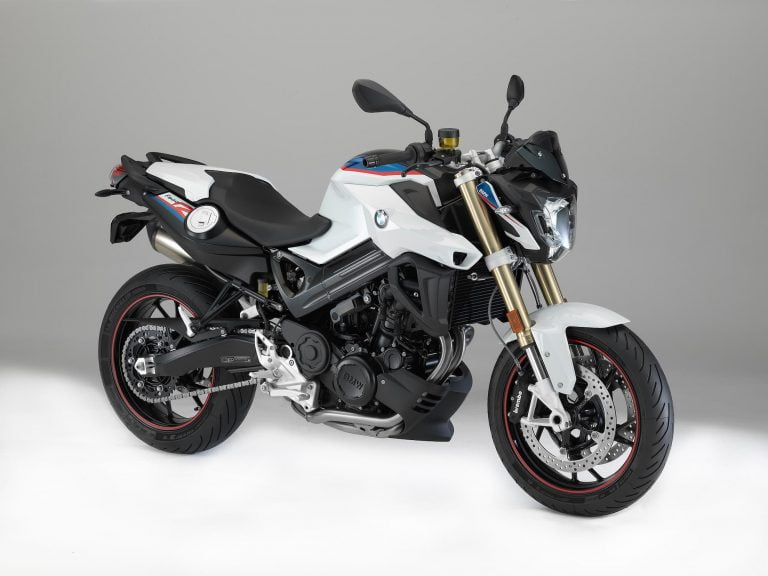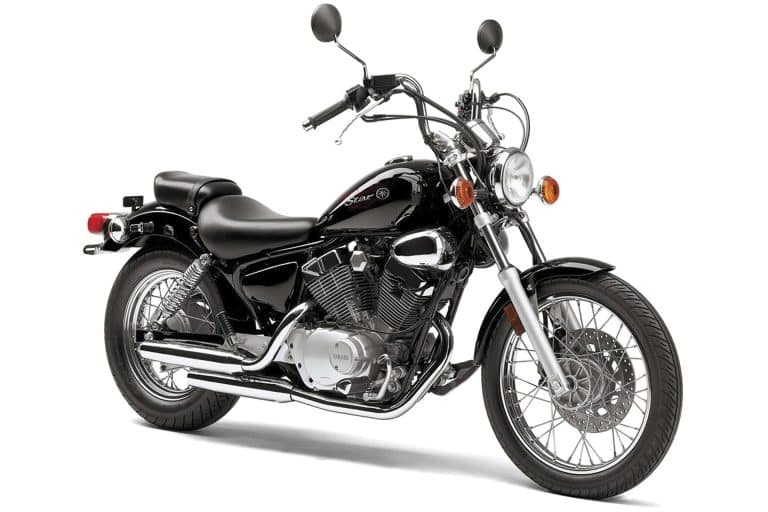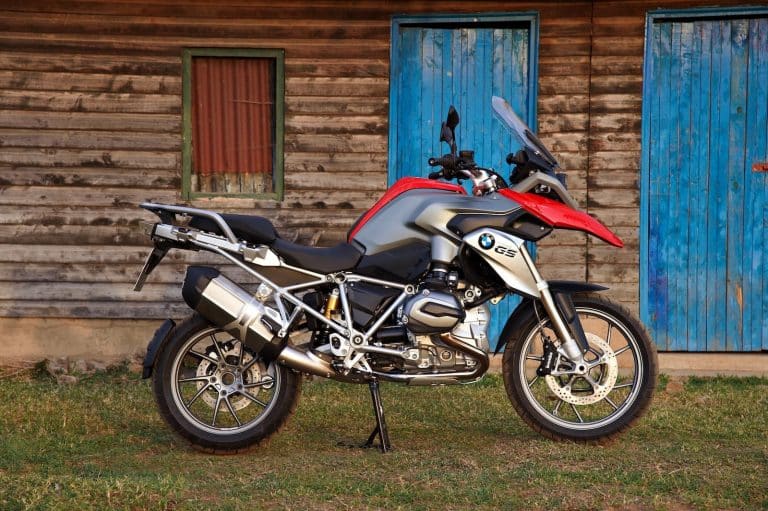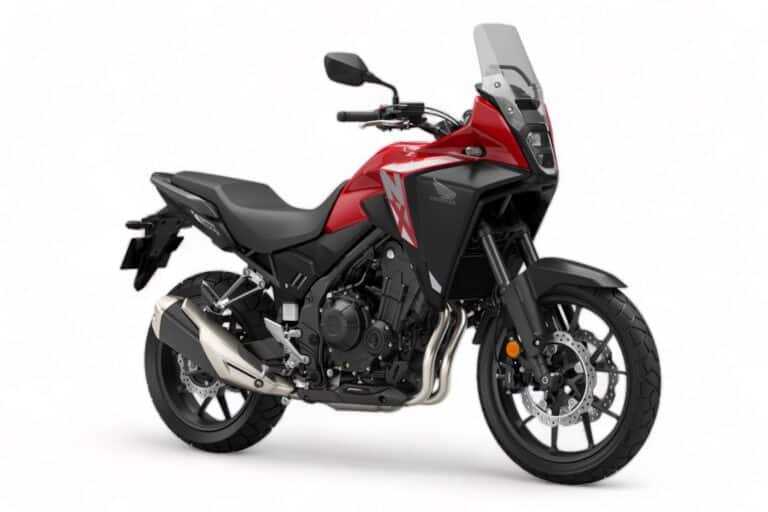Triumph Daytona 660 (2022+) Maintenance Schedule / Service info
This is the maintenance schedule for the Triumph Daytona 660, a mid-size road-going sport bike from Triumph released in 2024, including the A2 / LAMS-approved version.
The Triumph Daytona 660 inherits the legacy of the Daytona from the high-powered, and recently track-focused sport bikes, like the Triumph Daytona Moto2 765, but is really a sport bike / fairing-equipped build of the Triumph Trident 660, released in 2021.
The Daytona 660 is a more focused sport bike than its Trident or Tiger Sport 660 stablemates. The engine is tuned for more peak power, with 95 PS (70 kW / 94 bhp) at 11,250 rpm. The brakes are higher spec (with 4-piston radial calipers, vs 2-piston sliding calipers), and the riding position is significantly sportier.
The Daytona 660 is also available in learner-legal form in many markets, including Europe, the UK, Australia, and New Zealand. Parts and maintenance are the same — it’s restricted but nothing fundamentally changed in the build.
This site has links for things like oil and spark plugs from which we earn a commission (which unfortunately nobody can save, not even us). If you appreciate this work, then please use those links. Thanks!
Triumph Daytona 660 Service Intervals
Basic service intervals for the Triumph Daytona 660 are to change the oil and filter every 10000 miles / 16000 km or year.
Change the air filter and spark plugs every 20000 miles / 32000 km, and check the valves and the camshaft timing.
You also need to regularly replace the brake fluid and maintain the chain, keeping it clean, lubricated, and under tension.
There’s more detail in the full maintenance schedule below.
What you need to service the Triumph Daytona 660
Below is a list of general maintenance items (fluids and replaceable parts) you need to service your Daytona 660.
| Part | Triumph Daytona 660 |
|---|---|
| Engine oil | Semi or fully synthetic 10W-40 or 10W-50 oil that’s API SN or JASO MA or higher, e.g. Castrol Power 1 Racing 4T 10W-40. |
| Oil filter | Triumph part T1218001 or Hiflofiltro part HF204RC (common to many Triumph motorcycles) |
| Spark plug | NGK CR9EK spark plug. |
| Coolant | Triumph D2053 OAT coolant (50-50 pre-mixed). You can substitute this with Motorex M3.0, another OAT coolant. (See here for more about D2053 alternatives) |
| Bulbs | All LED, you need Triumph parts (but they’re unlikely to fail!) |
| Brake fluid | Use DOT 4, e.g. Castrol DOT 4 |
| Grease | An NLGI 2 spec lithium soap-based grease, e.g. Royal Purple NLGI 2 grease |
| Chain | Maintain your chain with a high-quality lubricant like Motul chain lubricant or Motul chain paste |
Maintenance schedule for the Triumph Daytona 660
Below is the maintenance schedule for the Triumph Daytona 660.
We’ve split the maintenance schedule out into daily/pre-ride checks, which should be done often, and a maintenance schedule of major things like oil changes and valve services.
Daily / Pre-ride checks
Do the following checks on the Triumph Daytona 660 daily or before every ride. At every regular service, check through this checklist as well.
| Daytona 660 Daily / pre-ride checks |
|---|
| Engine and oil cooler – check for leaks |
| Fuel system – check for leaks, chafing etc. |
| Coolant level – check/top up |
| Clutch – check operation |
| Clutch cable – check function and adjust as necessary |
| Wheels – inspect for damage |
| Tyre wear/tyre damage – check |
| Tyre pressures – check/adjust |
| Lights, instruments, and electrical systems – check |
| Steering – check for free operation |
| Front and rear suspension – check for leaks/smooth operation |
| Brake system – check operation |
| Brake pads – check wear levels |
| Brake master cylinders – check for fluid leaks |
| Brake calipers – check for fluid leaks and seized pistons |
| Brake fluid levels – check |
| Drive chain slack – check/adjust See below for notes |
| Fasteners – inspect visually for security, tighten as needed |
| Bank angle indicators – inspect visually for wear |
| Side stand – check operation |
Daytona 660 regular maintenance schedule
Below is the regular maintenance schedule to be done every 10,000 miles or 16,000 km, or every year.
Notes
- Do the daily checks as well as the scheduled service items below below.
- If there’s both a time and distance interval (e.g. for oil changes), follow the earlier of the two. E.g. change the oil every 10,000 miles / 16,000 km or every year.
- Items marked [T] need specialist Triumph equipment.
| mi x 1000 | 0.6 | 10 | 20 | 30 | 40 | |
|---|---|---|---|---|---|---|
| km x 1000 | 1 | 16 | 32 | 48 | 64 | Every |
| Engine oil – replace (Motul 7100 10W-40 or 10W-50) | ✓ | ✓ | ✓ | ✓ | Year | |
| Engine oil filter – replace (HF204RC) Oil filter torque: 10 Nm / 89 lbf-in | ✓ | ✓ | ✓ | ✓ | Year | |
| Exhaust butterfly valve cables – check the cable for chafing, cracks or damage. Replace if necessary | ✓ | ✓ | ✓ | ✓ | Year | |
| Air filter – Replace | ✓ | ✓ | More often if riding in wet or dusty conditions | |||
| Spark plugs – Replace (NGK CR9EK) Spark plug torque: 12 Nm / 9 lb-ft | ✓ | ✓ | ||||
| Cooling system – check hoses for chafing, cracks or damage. Replace if necessary | ✓ | ✓ | ✓ | ✓ | ||
| Coolant – replace (Motorex M3.0 or Triumph D2053, an OAT coolant) | 3 years | |||||
| Clutch lever pivot – clean/grease | ✓ | ✓ | ✓ | ✓ | Year | |
| Valve clearances – check/ adjust | ✓ | ✓ | ||||
| Camshaft timing – check/ adjust | ✓ | ✓ | ||||
| Wheel bearings – check for wear/smooth operation | ✓ | ✓ | Year | |||
| Headstock bearings – check/adjust | ✓ | ✓ | ✓ | ✓ | ✓ | Year |
| Rear suspension unit and linkage – lubricate | ✓ | ✓ | ||||
| Fork oil – renew | ✓ | |||||
| Swinging arm spindle – lubricate | ✓ | ✓ | ||||
| Brake fluid – renew (Castrol DOT 4) | 2 years | |||||
| Drive chain – lubricate (Motul chain paste) | ✓ | ✓ | ✓ | ✓ | Year (See below) | |
| Drive chain – wear check | ✓ | ✓ | ✓ | ✓ | Year | |
| Drive chain rubbing strip – check for wear, cracks, or damage | ✓ | ✓ | ✓ | ✓ | Year | |
| [T] Instruments, chassis ECM, keyless ECM and engine ECM–check for latest calibration download using the Triumph diagnostic tool | ✓ | ✓ | ✓ | ✓ | Year | |
| [T] Autoscan – Carry out a full Autoscan using the Triumph diagnostic tool | ✓ | ✓ | ✓ | ✓ | Year | |
| [T] Carry out all outstanding Service Bulletin and warranty work | ✓ | ✓ | ✓ | ✓ | Year | |
| [T] Complete the service record book and reset the service indicator | ✓ | ✓ | ✓ | ✓ | Year |
Triumph Daytona 660 Drive Chain Maintenance
Maintain your drive chain regularly — not just at major services. If you use your Daytona at the track or ride through rain or get the chain wet from washing, you should clean and lube it right away.
Below is the recommended schedule for maintaining the Daytona 660’s chain per the manual.
| Item | Every |
|---|---|
| Drive chain – Check slack, adjust as necessary See below for guidance | Pre-ride |
| Drive chain – lubricate | 200 miles (300 km) |
| Drive chain – wear check | 500 miles (800 km) |
Checking chain slack
To check the slack on the Daytona 660, put the motorcycle in neutral, onto its kickstand, and on a level surface. Make sure there is no luggage or load on the bike.
Check the slack on the lower part of the chain, midway between the sprockets, and check it in multiple places (move the motorcycle forwards and backwards) as chains wear unevenly.
Slack on the Triumph Daytona 660 is defined as the free movement of the chain in the loosest part.
Target chain slack for the Triumph Daytona 660: 43-55 mm (1.7 – 2.15 in)
If the chain slack is out of spec, you need to adjust it.
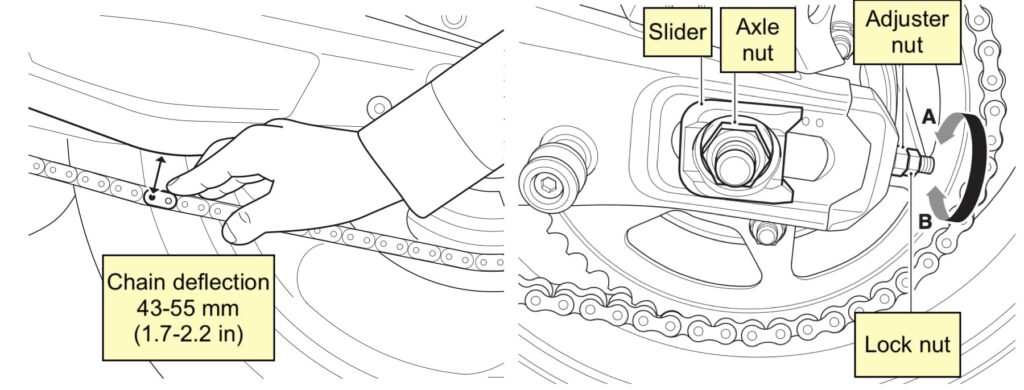
Adjusting chain slack
To adjust the chain slack on the Daytona 660, follow the steps below. The goal is to set it to 43 mm (or slightly more) to allow slack to increase with chain wear.
- Loosen the rear axle nut with a breaker bar and the lock nuts on either side of the axle.
- Turn the adjuster nuts to tighten (or loosen) the chain. Keep checking the chain tension to see if it has come within spec to 43 mm, give or take (the manual indicated 43-46 mm).
- Keep an eye on the adjuster alignment on either side of the axle. Make sure that the adjustment is to the same point so the chain and wheel remain aligned.
- When you’re done, tighten the axle to 110 Nm / 81 lb-ft.
- Re-check the chain slack again to make sure it’s still within spec.
- Tighten the adjuster nuts to 3 Nm / 2 lb-ft
- Tighten the adjuster lock nuts to 15 Nm / 11 lb-ft.
Wheels, Tyres, and Tyre Pressures
The Triumph Daytona 660 ships with Michelin Power 6 tyres stock, but the very standard sportbike-spec rims will take a wide variety of street, sport touring, and sport tyres.
Below are the recommended tyre pressures when cold.
| Wheel | Rim size | Tire size | Tire pressure (cold) |
|---|---|---|---|
| Front | 17 x 3.5 in | 120/70 ZR 17 58W | 2.35 bar / 34 psi |
| Rear | 17 x 5.5 in | 180/55 ZR 17 73W | 2.90 bar / 42 psi |
About the Triumph Daytona 660
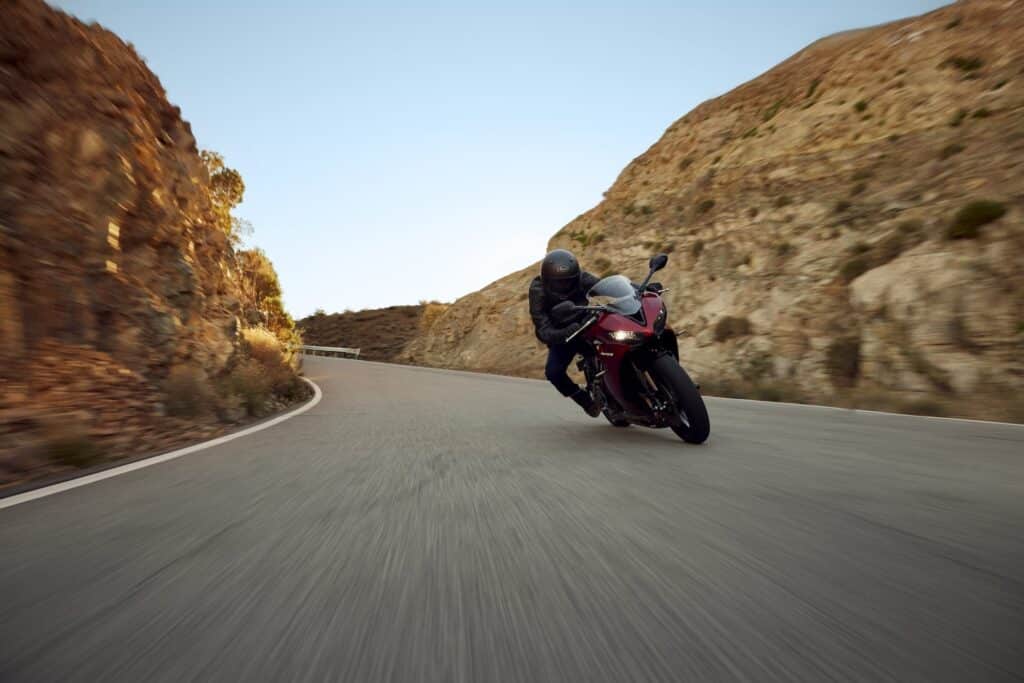
The Triumph Daytona 660 is an entry-level sport bike, or put another way, a versatile all-rounder sport bike that can do everything from daily commuting to weekend fun with grace.
It inherits the legacy of the Daytona 660 from bikes of the same name of the past, most recently the high-spec Moto2 only 765-powered motorcycle. But it most resembles something like the base-spec Triumph Daytona 675 of around a decade prior.
Of course, the Triumph Daytona 675 was a different bike, intended to compete directly with 600 cc-class sportbikes. The Daytona 660 is intentionally different.
The engine in the Daytona 660 is Triumph’s peachy 659 cc three-cylinder engine, an engine intentionally designed for street riding. Its sub-660 cc capacity means that it slides in under learner-legal capacity limits in most parts of the world. The same is true of the peak power, which can’t be higher than 95 PS (the rule is that the peak power of the unrestricted bike can’t be double a learner bike’s restricted peak power of 35 kW / 48 PS).
The engine is a spritely motor with a flat torque curve and great sound, especially considering this is a mid-range motorcycle built relatively on a budget.
There have been a plethora of middleweight sport bikes that have come on the market as late. They span a range of power and technology levels — as well as budgets — to cater to a wide variety of needs. The Daytona is at the entry-level end of the range, something like a Honda CBR650R — which has an engine that makes very similar power and has a similar level of spec in its suspension and brakes.
Despite being “entry-level”, there’s a lot that riders of every level can get excited about. The Daytona 660’s 70 kW / 95 PS is nothing to be sneezed at, and is plenty for carving up tighter winding roads or everyday riding pleasure. The engine sings past 12,000 rpm — an engine speed few reach often on high-end sportbikes in everyday riding. And while there’s limited adjustability in the suspension, it’s sure to be enough for most people’s everyday needs, while also being cheaper to service (or replace).
Finally, there are no other three-cylinder options for those looking for a learner-legal motorcycle in Australia/NZ, Europe, or the UK. Since the Triumph Daytona 660 can be detuned to fit within power limits, it is distinct from both its bigger sibling, the Street Triple range, as well as from Yamaha’s MT-09.
The Daytona 660 has higher spec than its Trident / Tiger Sport stablemates, which share a similar spec level (though the Tiger Sport 660 has much more protection and a little more weight as a result). Below is a summary of the difference.
| Model | Trident 660 / Tiger Sport 660 | Daytona 660 |
|---|---|---|
| First model year | 2021 (Tiger Sport 2022) | 2024 |
| Peak power | 60 kW / 81 PS / 80 bhp @ 10,250 rpm | 70 kW / 95 PS / 94 bhp @ 11,250 rpm |
| Peak torque | 64 Nm (47 lb-ft) @ 6,250 rpm | 69 Nm @ 8,250 rpm |
| Compression ratio | 11.95:1 | 12.05:1 |
| Front suspension | Showa 411mm SFF USD | Showwa 41mm SFF-BP USD |
| Front brakes | 2 x 310 mm discs, 2-piston sliding calipers | 2 x 310 mm discs, 4-piston radial calipers |
Manual for the Triumph Daytona 660
The above maintenance schedule and service intervals come straight from the user manual for the Triumph Daytona 660.
See the screenshots from the owner’s manual below for reference.
You can download the manual for the Triumph Daytona 660 directly from Triumph’s website, including in other languages.
